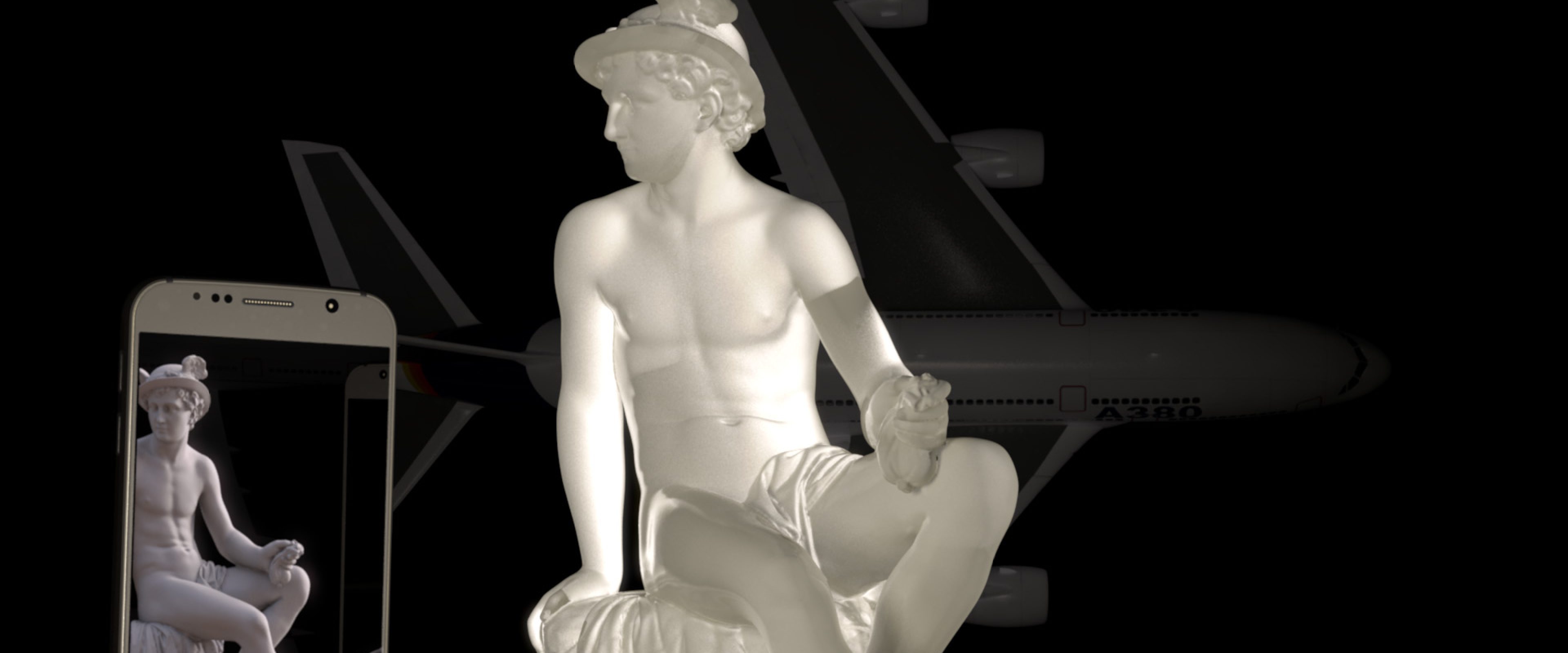Digital Bodies is organized by the Eli and Edythe Broad Art Museum at Michigan State University and curated by Carla Acevedo-Yates and Steven L. Bridges, Assistant Curators. Support for this exhibition is provided by the Alan and Rebecca Ross endowed exhibitions fund and the MSU Broad’s general exhibitions fund.
About the Exhibition
Rushing into Water is a collaboration between Friedemann Banz and Giulia Bowinkel and Detlef Weinrich, better known as Tolouse Low Trax, a member of the music group Kreidler and resident DJ at the Salon des Amateurs, a legendary electronic music club in Düsseldorf. The song featured in this video, written by Weinrich, is inspired by a scene in Ken McMullen’s 1983 film Ghost Dance, where the philosopher Jacques Derrida argues that ghosts formerly residing in nature (trees, stones, et cetera) today find new territories in human technologies—and that as we interact with these technologies, we become ghosts and create ghosts. For the artists, this thesis beautifully describes contemporary human communication and the new perspectives that arise from it, such as artificial intelligence.
The video features three characters, all of whom are avatars for one of the artists: a smoke-emitting ghost, a technoid female figure, and an archaic priest. Each performs specific movements derived from data recorded from the artists’ bodies while dancing in a studio session. Prominently present in the video is a sculpture of Mercury, the ancient god of trade and communication, who is constantly changing, switching materials, and exploding and reassembling as a symbol of the cycle of cultural rise and decline.
Digital Bodies
In a time of embedded lives and networked culture, where the screen acts as a mediator between the self and perceived reality, technology has ostensibly become an extension of the body, changing our relationship to space, ourselves, and others. Digital Bodies is a one-year program that features videos by artists who use and manipulate digital technologies—mainly computer-generated images, signs, and systems sourced from digital platforms—to reflect on how these technologies have impacted our everyday lives and changed the ways we relate to the world. Given our current state of constant digital expansion and acceleration, these works express the pervasiveness and indispensability of digital culture in shaping our daily interactions.
